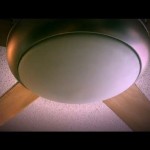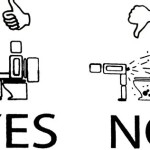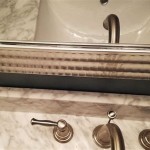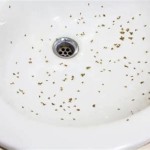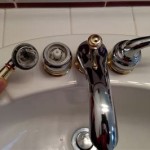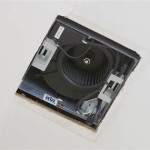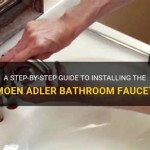How To Remove A Giant Bathroom Mirror
Removing a large, heavy bathroom mirror requires careful planning and execution to prevent injury and damage. This process involves several steps, from gathering the necessary tools to safely disposing of the old mirror.
Assessment and Preparation: Begin by assessing the mirror's installation method. Mirrors are typically adhered with mastic adhesive or clips. Understanding the mounting method will dictate the removal approach. Measure the mirror's dimensions to determine the appropriate size of replacement materials and ensure safe handling.
Gather Necessary Tools and Safety Equipment: Assembling the right tools beforehand streamlines the removal process. Essential items include: heavy-duty gloves, safety glasses, a drop cloth or old blankets, a pry bar or putty knife, duct tape, a utility knife, a hammer, suction cups, and possibly a reciprocating saw with a metal-cutting blade (for clip removal). If the mirror is glued, a heat gun or hair dryer can be helpful.
Protecting the Surrounding Area: Before starting the removal process, protect the bathroom surfaces. Cover the countertops, sink, and flooring with a drop cloth or old blankets. This protects them from scratches and shattered glass. Applying duct tape to the mirror's surface in a crisscross pattern helps contain glass shards in case of breakage. This is a crucial safety precaution.
Removing a Mirror Attached with Adhesive: If the mirror is glued to the wall, applying heat can soften the adhesive. Use a heat gun or hair dryer, moving it back and forth across the mirror's surface. Avoid concentrating heat in one spot, as this could crack the glass. Once the adhesive is softened, carefully insert a pry bar or putty knife behind the mirror. Start at a corner or edge and gently work the tool behind the mirror, applying even pressure to separate it from the wall. If working with a partner, have one person use suction cups to support the mirror while the other person works with the pry bar. Slowly and patiently work your way around the perimeter of the mirror until it is completely detached.
Removing a Mirror Secured with Clips: Mirrors installed with clips require a different approach. First, locate the clips holding the mirror in place. These are usually located along the mirror's edges or corners. Using a screwdriver or a reciprocating saw with a metal-cutting blade, carefully remove the clips. Once all clips are removed, gently pull the mirror away from the wall. Again, using suction cups can assist in supporting the heavy mirror during removal.
Handling and Disposal of the Old Mirror: Once the mirror is removed, handle it with extreme care. Large, heavy mirrors can be difficult to maneuver and pose a significant risk of injury. If possible, have another person assist with carrying and transporting the mirror. Wrap the mirror in heavy blankets or cardboard for added protection during transport. Check local regulations for proper disposal methods. Some municipalities require mirrors to be wrapped and labeled as "broken glass" before disposal. Recycling options may also be available.
Preparing for Installation of a New Mirror: After removing the old mirror, inspect the wall for any damage. Repair any holes or imperfections before installing the new mirror. Clean the wall surface thoroughly to ensure proper adhesion for the new mirror or to provide a clean surface for clip installation. Measure the space accurately to select the appropriate size replacement mirror.
Safety Precautions Throughout the Process: Safety should be the top priority throughout the entire mirror removal process. Always wear protective gear, including heavy-duty gloves and safety glasses. Be aware of your surroundings and ensure the work area is clear of obstacles. If the mirror is exceptionally large or heavy, consider seeking professional assistance for removal. Professional glaziers possess the experience and equipment to handle large mirrors safely and efficiently.
Dealing with Broken Glass: In the event of accidental breakage, exercise extreme caution. Wear thick gloves and carefully collect large shards of glass. Use a broom and dustpan to sweep up smaller pieces. Consider using a vacuum cleaner with a hose attachment to collect fine glass particles. Dispose of broken glass properly according to local regulations.
Alternative Removal Methods for Stubborn Adhesive: If the adhesive is particularly stubborn, a wire saw can be used. This involves carefully threading a thin wire behind the mirror and using a sawing motion to cut through the adhesive. This method requires patience and precision to avoid damaging the wall. Alternatively, specialized adhesive removers can be applied, but always follow the manufacturer's instructions carefully and ensure adequate ventilation.
Considerations for Different Wall Types: Different wall types may require slightly different approaches. For example, removing a mirror from drywall requires extra care to avoid damaging the wall surface. Using a wider pry bar can distribute pressure more evenly and reduce the risk of gouging the drywall. On tiled walls, take care not to chip or crack the tiles while removing the mirror or its clips.

How To Safely And Easily Remove A Large Bathroom Builder Mirror From The Wall Site Title

How To Safely And Easily Remove A Large Bathroom Builder Mirror From The Wall Site Title

How To Remove A Frameless Mirror Like Nervous Grandma

How To Safely And Easily Remove A Large Bathroom Builder Mirror From The Wall Site Title

How To Remove A Bathroom Mirror Lowe S

How To Safely And Easily Remove A Large Bathroom Builder Mirror From The Wall Site Title

How To Remove Mirror Off Wallsafely

How To Safely Remove That Large Builder Bathroom Mirror Mirrors Bathrooms Home Decor
:strip_icc()/Design_CathieHongInteriorsPhoto_ChristyQPhotography-b2290decbe0e4d0b952f280fb7bdc896.jpg?strip=all)
How To Remove A Bathroom Mirror From The Wall

How To Safely And Easily Remove A Large Bathroom Builder Mirror From The Wall Site Title
Related Posts

